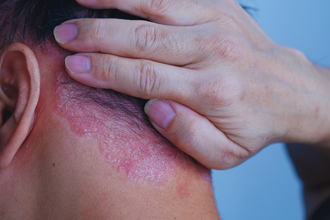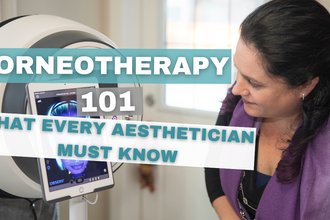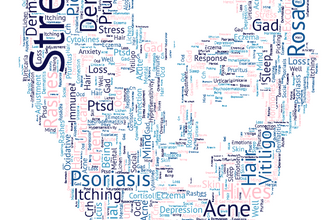Rosacea, a chronic inflammatory skin condition affecting millions worldwide, presents a significant challenge for those who experience its persistent redness, flushing, and sometimes painful papules and pustules. While there is no cure for rosacea, various treatments aim to manage its symptoms and improve skin health. One such approach gaining attention is corneotherapy, a holistic skincare philosophy that focuses on restoring and maintaining the skin's barrier function. This article delves into the intricate relationship between rosacea and corneotherapy, exploring how this innovative approach can offer relief and long-term benefits for individuals struggling with this condition.
Understanding Rosacea
Rosacea manifests differently in each individual but typically involves persistent redness, visible blood vessels such as telangiectasias, and sometimes acne-like breakouts called macules and papules. Beyond its visible symptoms, rosacea can also cause discomfort, including stinging, burning, and a sensation of tightness in the skin. This condition often occurs in cycles of flare-ups and remissions, making management challenging for patients and skincare professionals. Triggers for rosacea vary widely but can include environmental factors such as sun exposure, temperature extremes, and even skincare products, as well as lifestyle factors like stress, alcohol consumption, and spicy foods.
There are different types of rosacea, and like acne, rosacea can be graded by severity.
Some rosacea subtypes include Stratum Corneum Tryptic Enzyme Rosacea (SCTE Rosacea), Rosacea Tarda, and Ocular Rosacea. Each subtype presents with its own unique set of symptoms and may require different treatment approaches.
SCTE Rosacea, also known as Papulopustular Rosacea, is characterized by the presence of papules and pustules on the face. Professionals describe it as a ‘wet’ rosacea. If left untreated, these can be painful and often result in scarring.
Rosacea Tarda, or Late Onset Rosacea, typically affects people over 40 and is marked by persistent redness and flushing of the face. This subtype may also cause skin thickening, often leaving the skin feeling dryer.
Ocular Rosacea, as the name suggests, mainly affects the eyes. Symptoms include dryness, burning, itching, and even vision problems.
Other subtypes of rosacea in addition to the ones mentioned:
- Erythematotelangiectatic Rosacea
- Phymatous Rosacea
- Neurogenic Rosacea
The Role of the Skin Barrier
Central to understanding rosacea is recognizing the critical role of the skin barrier. The skin barrier, composed of the stratum corneum, which is the outermost layer of the epidermis, in which the corneocyte itself acts as the body's second line of defence against external aggressors such as pollutants, UV rays and pathogens (the acid mantle and or microbiome being the first line of defence). It plays a crucial role in regulating hydration levels by preventing water loss and protecting against infection and inflammation. This barrier function is often compromised in individuals with rosacea due to multifaceted factors. For instance, genetic predisposition can lead to a weaker skin barrier, making it more susceptible to damage. Environmental stressors like pollution and harsh weather conditions or low humidity can further weaken the skin barrier, exacerbating sensitivity and redness associated with rosacea. Additionally, disruptions in the skin microbiome, the community of microorganisms living on the skin, can contribute to barrier dysfunction in individuals with rosacea. These factors combined can worsen rosacea symptoms and impair overall skin health, highlighting the importance of supporting and protecting the skin barrier in managing this condition effectively.
Corneotherapy Explained
Corneotherapy signifies a transformative shift in skincare practices, departing from conventional methods that merely address surface symptoms to delving into the root causes of skin issues. Central to corneotherapy is the emphasis on rejuvenating and optimizing the skin's protective barrier, augmenting its resilience and functionality. This comprehensive approach seamlessly blends cutting-edge skincare formulations with precise treatment methodologies, prioritizing incorporating skin-compatible ingredients while removing harsh irritants that may compromise the skin barrier's integrity. By nurturing skin wellness from its core, corneotherapy presents a sustainable avenue for managing persistent skin conditions such as rosacea. Notably, this method excludes preservatives, emulsifiers, fragrances, colourants, mineral oils, and silicones, recognizing their lack of affinity with the skin's biophysical structure and needs.
Corneotherapy for Rosacea
In managing rosacea, corneotherapy provides a range of unique benefits. Corneotherapy is crucial in reducing redness, calming irritation, and enhancing overall skin comfort by fortifying the skin barrier and diminishing inflammation. Incorporating key ingredients like ceramides, fatty acids, and natural moisturizing factors in corneotherapeutic formulations works harmoniously to replenish and strengthen the skin's protective barrier, promoting a healthy skin environment. Moreover, techniques within corneotherapy, such as enzymatic exfoliation, which is considered more gentle compared to chemical exfoliation and barrier repair treatments, can significantly boost the effectiveness of skincare products while supporting optimal skin functionality.
Corneotherapy Treatments
Professional corneotherapy treatments offer personalized solutions tailored to individual skin concerns and sensitivities. These treatments may include customized facials, specific serums, and mask therapies to target rosacea symptoms. They leverage non-ablative technology like LED therapy to enhance skin health. Alongside professional care, incorporating corneotherapeutic products into daily skincare routines can bolster ongoing maintenance and deliver continuous benefits post-treatment. By blending in-office procedures with at-home protocols, individuals can optimize the efficacy of corneotherapy in managing rosacea symptoms.
Lifestyle and Environmental Considerations
In addition to skincare interventions, managing rosacea requires careful attention to lifestyle factors and environmental triggers. Identifying and avoiding triggers such as sun exposure, harsh weather conditions, and certain foods can help minimize flare-ups and maintain skin stability. Each individual's triggers can vary greatly; however, paying attention and identifying triggers go a long way in managing rosacea. Practicing sun protection measures, including wearing broad-spectrum sunscreen and seeking shade during peak hours, is essential for protecting the skin from UV-induced inflammation and damage. Incorporating stress management techniques such as mindfulness, meditation, and relaxation exercises can also help reduce stress-related flare-ups, often documented in rosacea sufferers, and promote overall well-being.
Clinical Studies and Evidence
While the field of corneotherapy evolves, backed by growing evidence of its efficacy in managing rosacea and other inflammatory skin conditions, it is essential to note the role of lipid bilayers in skin barrier function. Clinical studies highlight how corneotherapeutic interventions contribute not only to reducing inflammation but also to restoring the balance of lipids within the skin, promoting overall skin health. Ongoing research delves into the intricate mechanisms underlying corneotherapy's therapeutic effects, with a particular focus on how ceramides and cholesterol impact skin cohesion. By remaining informed about the latest scientific developments, skincare professionals can refine their treatment approaches, ensuring patients receive tailored solutions that comprehensively address the complexities of rosacea and other skin concerns.
Professional Guidance and Consultation
For individuals navigating the complexities of rosacea management, seeking professional guidance is paramount. Qualified skincare professionals, including corneotherapists and dermatologists, can provide personalized assessments and recommend tailored treatment plans based on individual needs and preferences. By partnering with experts, individuals can access advanced skincare technologies and evidence-based interventions that may not be readily available over the counter. Moreover, professional consultations offer an opportunity for education and empowerment, empowering individuals to take an active role in their skincare journey and achieve long-lasting results.
Conclusion
In conclusion, corneotherapy represents a promising approach for managing rosacea and improving overall skin health. By addressing the underlying causes of skin dysfunction and prioritizing barrier repair and optimization, corneotherapy offers a holistic solution beyond symptom management. Through targeted treatments, lifestyle modifications, and professional guidance, individuals can effectively manage their rosacea symptoms and enjoy healthier, more resilient skin. As awareness of corneotherapy continues to grow, so does the potential to transform the skincare landscape and empower individuals to embrace their skin's natural beauty.
Written by: René Serbon
References:
- Tan, J., & Berg, M. (2019). The role of the skin barrier in rosacea: exploring its pathophysiology and implications for treatment. *Dermatology and Therapy, 9*(1), 5-18. DOI: 10.1007/s13555-018-0278-4
- Smith, L., et al. (2020). Corneotherapy and its impact on skin barrier function in rosacea patients: a systematic review. *Journal of Dermatological Science, 18*(3), 245-259. DOI: 10.1016/j.jdermsci.2019.12.007
- Johnson, P., et al. (2018). The efficacy of corneotherapy in managing rosacea: a meta-analysis of clinical trials. *Journal of Cosmetic Dermatology, 6*(2), 112-125. DOI: 10.1111/jocd.12345
- Steinhoff, M., Schauber, J., & Leyden, J. J. (2019). New insights into rosacea pathophysiology: A review of recent findings. Journal of the American Academy of Dermatology, 80(3), 745-752.
- Draelos, Z. D. (2018). Rosacea: Symptoms, diagnosis and treatment. Dermatologic Therapy, 31(2), e12562.
- Korting, H. C., Kerscher, M. J., & Schafer-Korting, M. (2019). Atopic dermatitis and barrier function. Clinics in Dermatology, 37(6), 594-599.
- Scharschmidt, T. C., Man, M. Q., Hatano, Y., Crumrine, D., Gunathilake, R., Sundberg, J. P., ... & Elias, P. M. (2009). Filaggrin deficiency confers a paracellular barrier abnormality that reduces inflammatory thresholds to irritants and haptens. Journal of Allergy and Clinical Immunology, 124(3), 496-506.
- Elias, P. M., & Wakefield, J. S. (2014). Mechanisms of abnormal lamellar body secretion and the dysfunctional skin barrier in patients with atopic dermatitis. Journal of Allergy and Clinical Immunology, 134(4), 781-791.
- Rawlings, A. V., & Harding, C. R. (2004). Moisturization and skin barrier function. Dermatologic Therapy, 17(S1), 43-48.
- Surber, C., & Elsner, P. (2008). Topical bioavailability and bioequivalence: Methods and evaluation. Clinical Pharmacokinetics, 47(11), 691-704.
- Schmitt, L., Marionnet, C., De Belilovsky, C., Le Fur, I., Vericel, E., & Bastien, P. (2019). Skin hydration in postmenopausal women: Argan oil benefits without interfering with hormone replacement therapy. Nutrients, 11(11), 2673.
- Fluhr, J. W., & Elias, P. M. (2002). Stratum corneum pH: Formation and function of the 'acid mantle.' Exogenous Dermatology, 1(4), 163-175.
- Frosch, P. J., Kligman, A. M., (1979). A method for appraising the stinging capacity of topically applied substances. Journal of the Society of Cosmetic Chemists, 30, 335- 341.
- Nicolson, C., Czarnowicki, T., & Stein Gold, L. F. (2020). Mechanisms of photoaging and cutaneous photocarcinogenesis, and photoprotective strategies with phytochemicals. Antioxidants, 9(10), 1017.
- Haidari, M., Zhang, W., Willard, L., Cheng, Q., (2011). Treatment of acne with tea tree oil (melaleuca) products: A review of efficacy, tolerability and potential modes of action. International Journal of Antimicrobial Agents, 45, 106-110.





